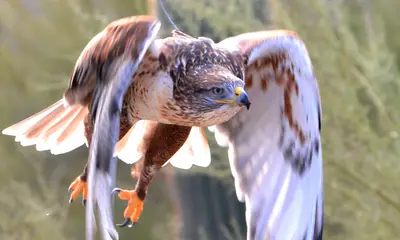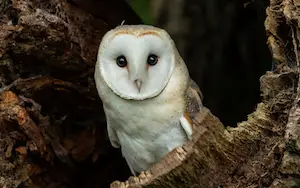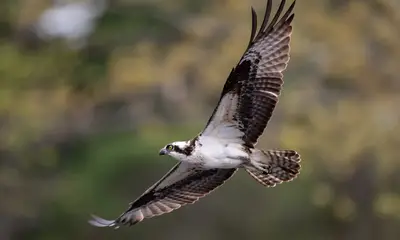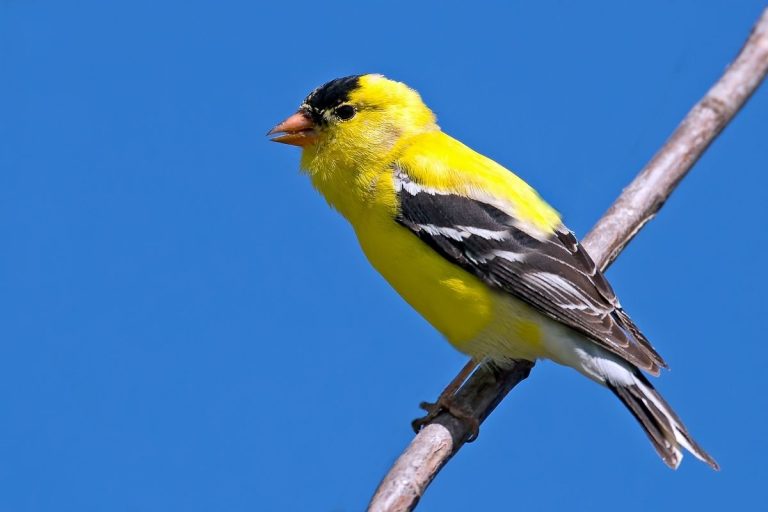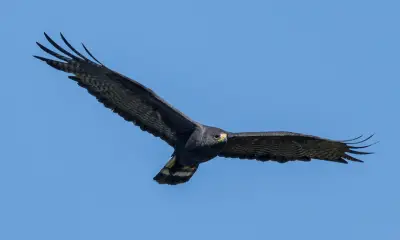21 Types Of BLACK Birds With RED HEAD (ID Guide With Photos)
Did you recently come across a black bird with a red head, and want to know what species it was?
Identifying black birds that have a red head is not as easy as it might seem, since there are surprisingly many birds in the world that fit this description.
To help you identify the bird you saw, we’ll cover the most important black birds with red head in this article.

What are the types of black birds with red heads?
There are 21 types of birds that are black with a red head, which are covered in full detail below.
Pileated Woodpecker
Scientific name: Dryocopus pileatus
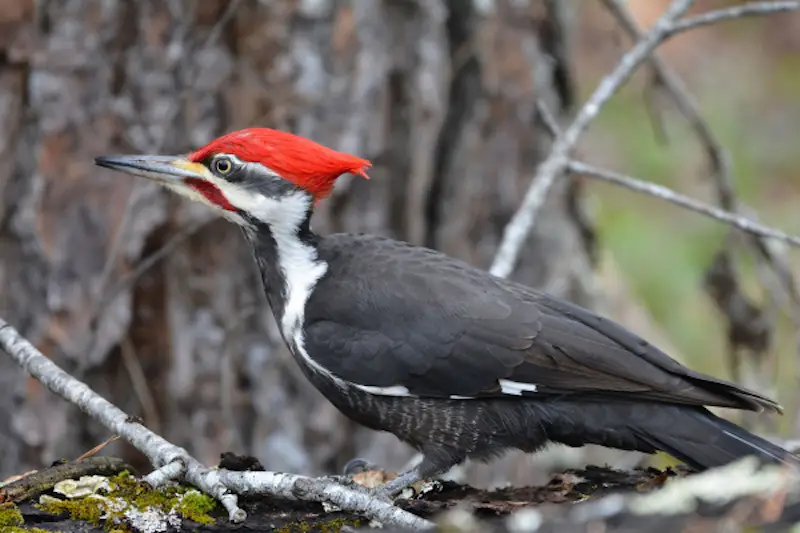
The Pileated Woodpecker is a large, crow sized woodpecker that has a bright red crest and forehead, as well as black and white stripes on their face and neck
The rest of this bird’s body is mostly black, although the white front edges of the wings flash brightly during flight.
The Pileated Woodpecker is the largest woodpecker in North America, and is a very shy bird that is mostly found in extensive tracts of woodland.
In order to find insects to eat, the Pileated Woodpecker drills oval holes in tree trunks that may be up to several feet long.
You can find large wood chips lying on the ground around its feeding trees, which is a tell-tale sign that Pileated Woodpeckers have been at work.
Red-headed Woodpecker
Scientific name: Melanerpes erythrocephalus
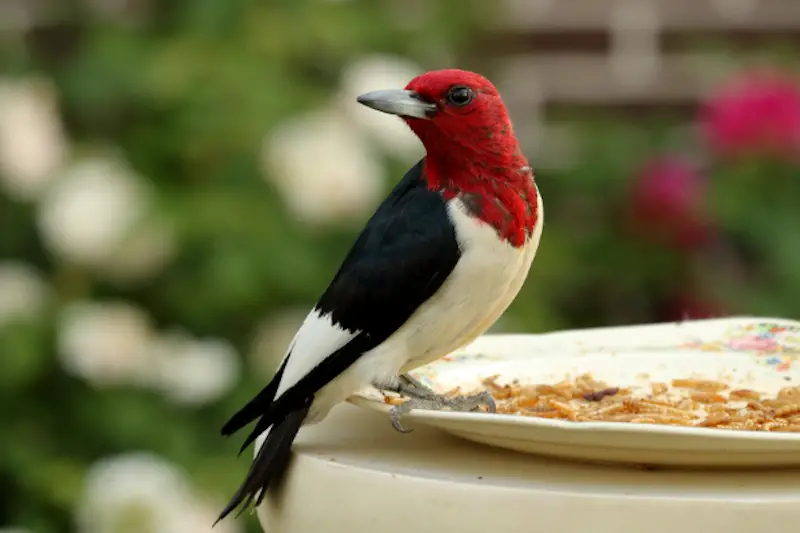
The Red-headed Woodpecker is one of the few non-dimorphic woodpeckers, which means that males and females look alike.
Red-headed Woodpeckers have a black and white body with a red head. While their back is uniformly black, thay have a white chest, rump and belly, as well as black wings and a black tail. The bill and legs are gray.
The Red-headed Woodpecker favors wide-open deciduous or coniferous forest habitats, or forests with plenty of dead or rotten limbs.
It may use the same nest cavity for multiple years in a succession, in contrast to other woodpeckers that only use them once or for a small period of time.
This medium-sized woodpecker used to be common throughout North America, but the population has unfortunately declined by more than 90 percent, and it is now a rare sight in most areas.
Acorn Woodpecker
Scientific name: Melanerpes formicivorus
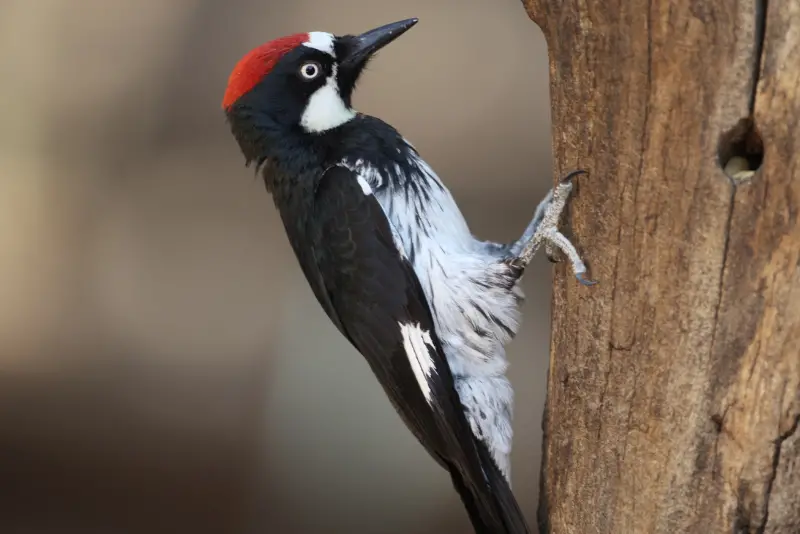
The Acorn Woodpecker is a colorful small woodpecker that only occurs in a few areas of the southwestern and western United States.
While the back and wings of these birds are entirely black, their face has a large white patch on the throat and forehead, while the belly is white with black spots.
In addition to their black plumage, both sexes also have a bright red patch on top of their head, and they are usually observed as part of a social group that forages together for acorns in open oak forests.
They store their acorns in trees that are riddles with small holes created by a group of Acorn Woodpeckers. These black birds also nest communally, and cooperate in raising their young.
Downy Woodpecker
Scientific name: Picoides pubescens

The Downy Woodpecker is the smallest woodpecker found in North America.
Males are black and white with a prominent red spot on their nape, but females are entirely black and white.
The wings of both sexes are black with white bars, which look like spots when the wings are folded.
Downy Woodpeckers are non-migratory, and can be seen all year round in most parts of North America, but they don’t occur in the arid regions in the southwest.
You can tell this woodpecker apart from the Hairy Woodpecker by its smaller size and short bill.
While Downy Woodpeckers don’t migrate, they like to move around outside of the breeding season, in search of areas with plentiful food.
Their preferred habitat is deciduous or mixed forest, where they feed on insects and insect larvae found under the bark of trees. During winter they also eat berries and seeds.
Hairy Woodpecker
Scientific name: Picoides villosus
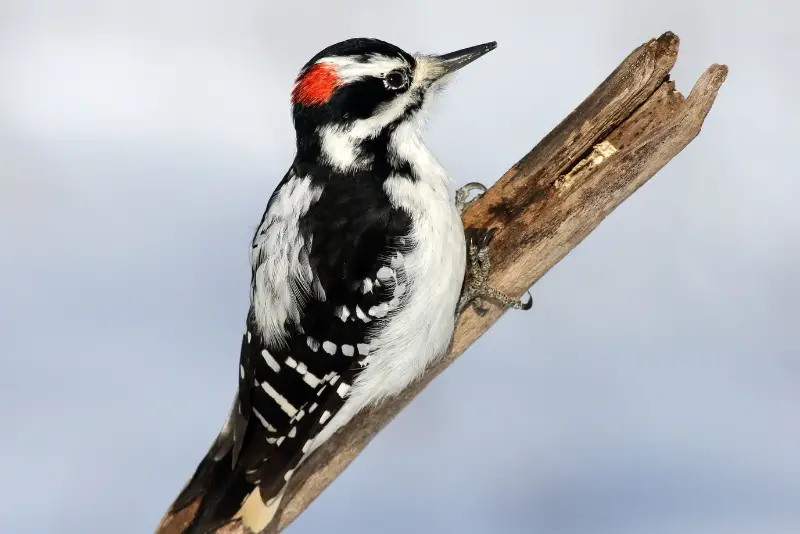
The Hairy Woodpecker looks similar to the Downy Woodpecker, but has a longer, thicker bill, and is a much larger bird overall.
Both the male and the female have black upperparts with white bars on the wing feathers, which look like spots when the wings are folded.
The male has a very small red patch on the back of its head, which is considerably smaller than the red patches on other woodpecker species.
The Hairy Woodpecker is a common breeding bird found throughout North America, and can be seen year-round.
This woodpecker breeds in both coniferous and deciduous forests, and is even found in parks and other urban areas with trees.
Red-breasted Sapsucker
Scientific name: Sphyrapicus ruber
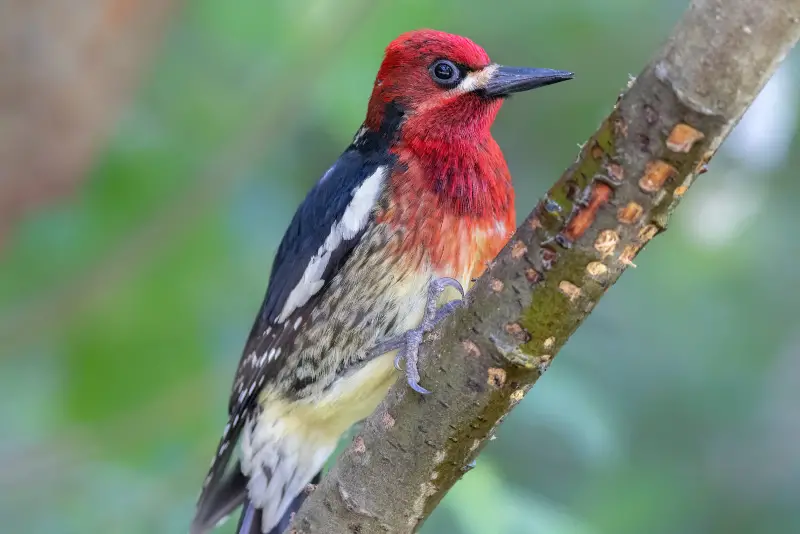
The Red-breasted Sapsucker is a striking member of the woodpecker family, due to the scarlet head and breast of adult birds.
The back is dark brownish black, while the belly is cream colored with dark spots and streaks. Juvenile birds look similar, but lack most of the red coloration.
Red-breasted Sapsuckers are birds of westernmost North America, and occur in a band along the coast from southern California all the way up to southern Alaska.
They are regular breeding birds in mixed forests, and can also be encountered in other habitats during winter, when there is an influx of northern sapsuckers that migrate to the United States for the winter.
Red-naped Sapsucker
Scientific name: Sphyrapicus nuchalis
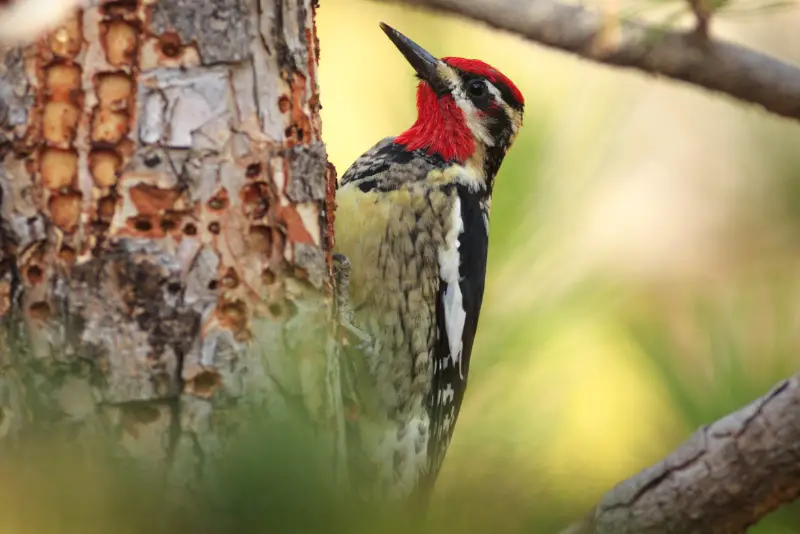
The Red-naped Sapsucker is a small woodpecker species with striking red coloration on the head.
The partially scarlet coloration of their head makes it easy to tell them apart from Red-breasted Sapsuckers, which have completely red colored heads.
This sapsucker is a breeding bird in the mountains of North America, but is more common during the winter months, when there is an influx of wintering birds from Canada.
Turkey Vulture
Scientific name: Cathartes aura

The Turkey Vulture is the largest vulture species in North America, and can reach a wingspan of up to 6 feet.
It is a big black vulture with a red head, and dark gray rear margins on their wings, which can be seen in flight.
Also known as the turkey buzzard, a soaring Turkey Vulture is easily identifiable due to the fact that it holds its wings in an upright V shape.
This large bird is a summer resident throughout North America, where it favors open country interspersed with woodland.
Similar to other vulture species, this black bird is specialized in feeding on carrion, and will often congregate in flocks around roadkill.
Red-headed Vulture
Scientific name: Sarcogyps calvus
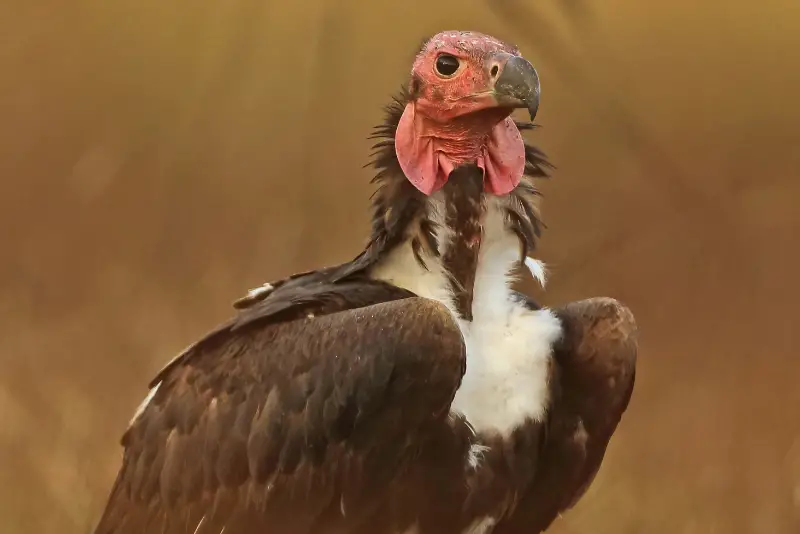
The Red-headed Vulture is a critically endangered species of South and Southeast Asia, where it is found in dry habitats with scattered forests.
Adults have a bare red head and black body. When in flight, the Red-headed Vulture can be identified by the white patches on the side of the flanks.
Immature Red-headed Vultures don’t have a naked head, and instead have gray feathers on their head. This is a rare vulture that is usually observed foraging solitary.
Crimson-collared Tanager
Scientific name: Ramphocelus sanguinolentus
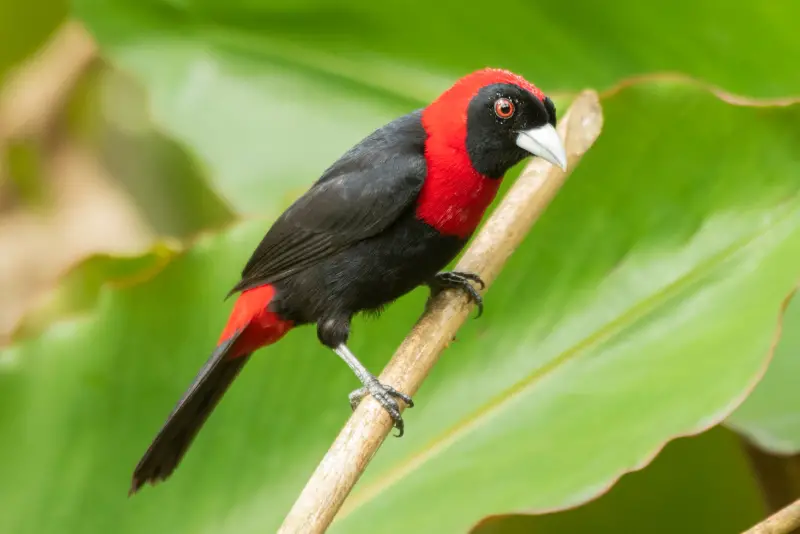
The Crimson-collared Tanager is a breeding bird of Mexico and Central America, but is spotted as a regular vagrant in southern Texas.
It is a bird of evergreen tropical rainforests, where it is most often observed foraging at the edges of clearings and along rivers.
The sexes resemble each other, and pairs are usually observed foraging together.
This striking bird can be distinguished from the Masked Crimson Tanager by its entirely silver bill, while only the lower bill is silver in the latter species.
Scarlet Honeyeater
Scientific name: Myzomela sanguinolenta
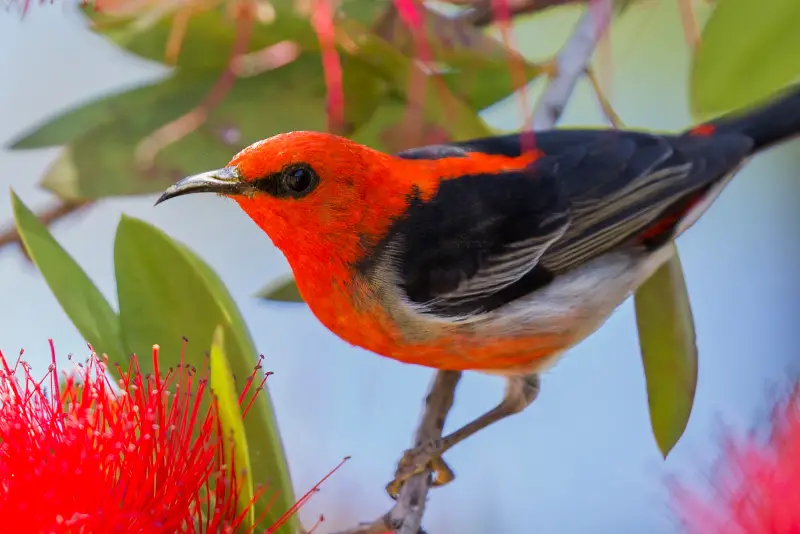
The Scarlet Honeyeater is a native of eastern Australia, where it is found in coastal forests, including mangrove forests.
Adult males have a bright red head and breast, as well as a black back, wings, and tail. Females are more dull, and are grayish brown.
This small bird in the honeyeater family is easily overlooked, as it likes to forage high up in the canopy, where it is hard to spot.
Crimson-crested Woodpecker
Scientific name: Campephilus melanoleucos
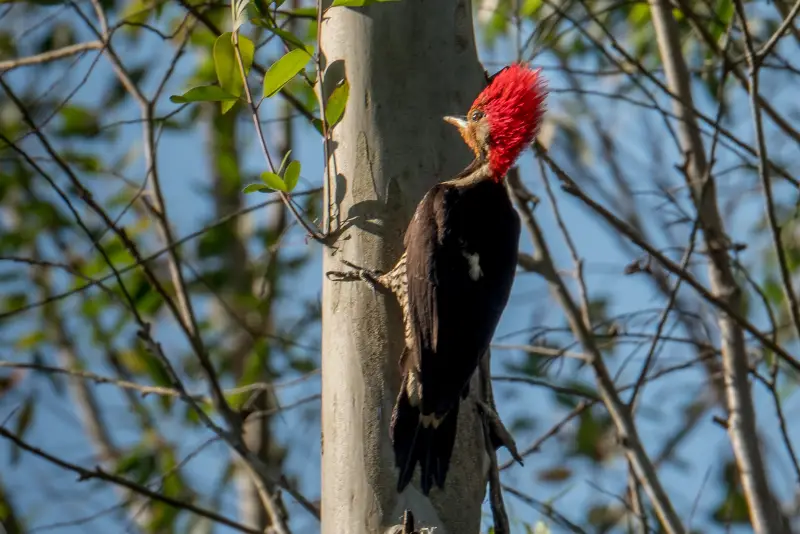
This large red headed woodpecker is found in the northern half of South America, where it is widespread and found in lowland forests and forest edges and clearings.
The male has a black upper side and an almost entirely red head, except for a white patch on the cheek. The female looks similar, but has a white lower part of the head.
Due to its very large range and adaptability to different types of forest habitats, the IUCN classifies this woodpecker as being of least concern.
Scarlet-headed Blackbird
Scientific name: Amblyramphus holosericeus

This is a striking icterid with a black body and a flaming orange red head and upper chest.
Adult males and females look similar, while juvenile birds lack the bright colors. It is native to central and southern South America, where this red headed blackbird favors marshes and swamp habitats.
Similar to other blackbirds, the Scarlet-headed Blackbird forms large flocks outside of the breeding season.
Red-faced Barbet
Scientific name: Lybius rubrifacies

This medium-sized barbet is found in a relatively small range in eastern Africa, where it occurs in isolated patches in Uganda, Rwanda, Burundi, and Tanzania.
Both sexes are mainly black, except for the red feathers on their face, and white edges on the front of the wings.
The preferred habitat of the Red-faced Barbet is savanna, although it is also found in some cultivated areas.
Red-headed Malimbe
Scientific name: Malimbus rubricollis

The Red-headed Malimbe is almost entirely jet black, except for a broad red cap from the forehead to the upper back.
Females look similar to males, but their forehead is black instead of red. It occurs in forests and farmland, and is quite common in equatorial Africa.
The Red-headed Malimbe is usually encountered in pairs or small groups, and prefers to forage high up in trees.
Red-headed Myzomela
Scientific name: Myzomela erythrocephala

This small honeyeater has a dark grayish black back and a crimson head with a small black mask.
Female Red-headed Myzomelas are light gray with a few small patches of red on their face, and juveniles are similar, but lack any reddish coloration.
These red headed black birds are found in mangrove forests in coastal areas of northern Australia and Papua New Guinea.
Rote Myzomela
Scientific name: Myzomela irianawidodoae

This small honeyeater is found in a small area of southern Indonesia, where it occurs in the lowland forests of Rote island.
The males are almost entirely blackish gray with a bright scarlet head and a small black mask. They also have a red rump.
Females are light brown with a cream belly, and a few patches of read on their cheeks and throat.
Crimson-headed Partridge
Scientific name: Haematortyx sanguiniceps
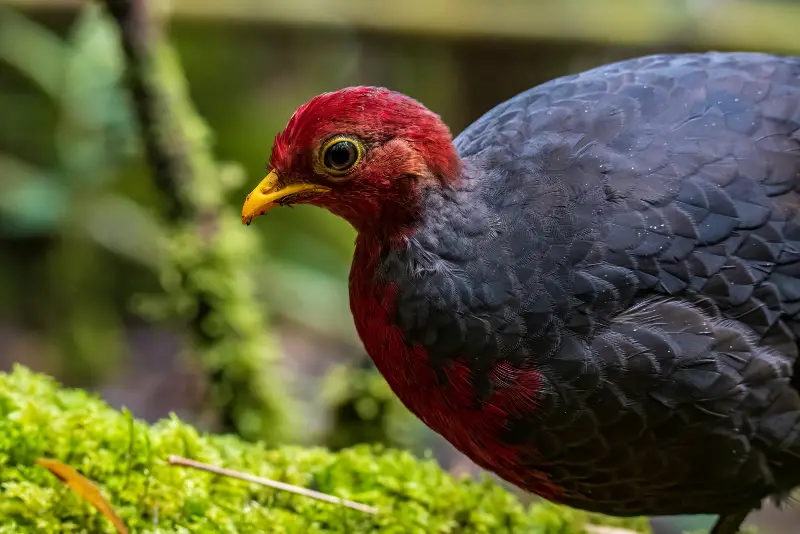
This black partridge has a dark red head and red breast. Both sexes are similar, but females have a more orange colored chest.
This beautiful bird inhabits high altitude forests of northern Borneo, where it is best identified by its loud metallic calls, which a group of Crimson-headed Partridges uses to communicate with each other.
Crimson-hooded Manakin
Scientific name: Pipra aureola
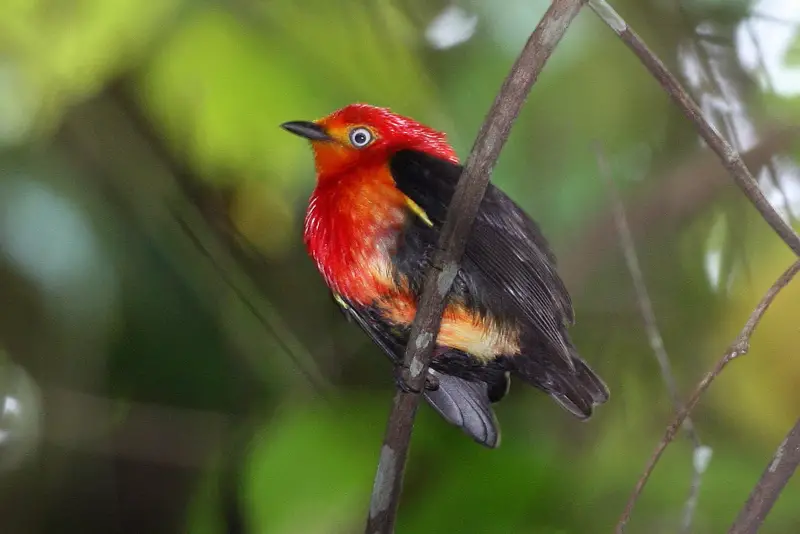
This small manakin is found in northeastern South America, where it is found in forests in swampy and flooded areas.
The male has a stunning appearance, with dark black upperparts that contrast with its deep red head and red chest.
Females and immature birds are much more inconspicuous and are largely dark grayish brown.
While it is quite common in its range, it’s often overlooked, since it forages high up in the foliage of old growth forest.
Red-headed Manakin
Scientific name: Ceratopipra rubrocapilla
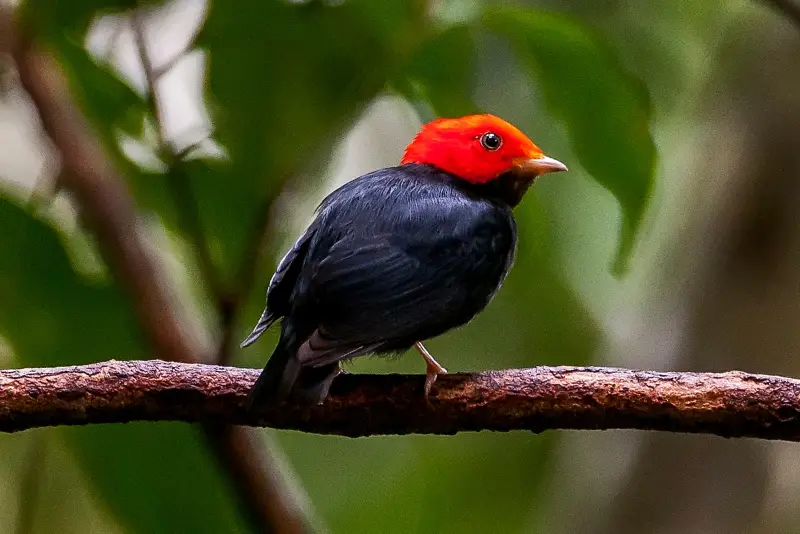
The Red-headed Manakin is found in a wide swath across northern South America. Males are dark gray and black, except for their brilliant red hood and face.
Male Red-headed Manakins like to display in small groups for the benefit of nearby females. Females are drab brownish yellow.
These colorful small birds forage in the mid-level branches of large trees, and are quite easy to overlook due to their small size.
Scarlet-horned Manakin
Scientific name: Ceratopipra cornuta
This manakin can be distinguished from the previous species by the crest on its red head. Otherwise its appearance is very similar, since these birds have a black body with a red head.
Females, on the other hand, are yellow brown, and very easily overlooked, unless they are observed together with a male.
It is found in a very small range in small patches of forest in Venezuela and northern Brazil.
Final remarks
In summary, here are the 21 species of birds that have a red head and black body.
- Pileated Woodpecker
- Red-headed Woodpecker
- Acorn Woodpecker
- Downy Woodpecker
- Hairy Woodpecker
- Red-breasted Sapsucker
- Red-naped Sapsucker
- Turkey Vulture
- Red-headed Vulture
- Crimson-collared Tanager
- Scarlet Honeyeater
- Crimson-crested Woodpecker
- Scarlet-headed Blackbird
- Red faced barbet
- Red-headed Myzomela
- Rote Myzomela
- Crimson-headed Partridge
- Crimson-hooded Manakin
- Red-headed Manakin
- Scarlet-horned Manakin
If you’ve spotted one of these red-headed black birds while bird watching, hopefully this ID guide will help you identify it quickly and easily.
And if you enjoyed this article, check out our guide to the black and red birds.


